
Lynnaea Haggard
Industrial Designer, Marketing & Communications
For those of you who couldn’t make it to CES, or were chained to a booth of your own the whole time, or who are just looking for a new perspective on the show – this is for you! Strap on your seat belts and hang on to your hats. This is the design scoop on CES 2020 from the joint perspective of two industrial designers here at Sundberg-Ferar who found the “golden ticket” in our chocolate bar (not really) and got to attend the show on behalf of the studio.
The following is our boots-on-the-ground perspective of this year’s show, including the ideas, products and experiences we found the most remarkable and relevant to our world of human-centric design.
Knowing, as I’m sure you do, how monumentally large CES really is, and how difficult a task it is to begin to encapsulate all the innovations there even in several paragraphs, please understand that this is not meant as a full show summary, but rather it is the two of us – David and Lynnaea – bringing you on a tour of the discussion topics and products from the show that we thought were important and have curated for you here.
So without further ado – let’s begin, as any sensible person would, in the bathroom.

Beauty in the Bathroom (and Kitchen)
At Sundberg-Ferar, we believe that the beauty in an object’s design is not a separate element from its function. Beauty itself is functional, and function is also a part of what makes an object beautiful. (Learn more about our philosophy on beauty and its misunderstood role in design here.) With that in mind, the bathroom products that we found the most spellbinding at CES ranged in beauty from the aesthetic and visual sense of the word to the functional side too.
Kohler flexed their savoir-faire in luxury bathroom design with their all-new 2020 sink finishes, including this eye-catching, deep navy that easily adds a touch of opulence and vintage to any bathroom. This was coupled with a minimal faucet that, while in the off position, was completely black and diminutive, but when lifted to the on position revealed an urban-inspired color pop under the handle. The gorgeous attention to detail we saw in Kohler’s products embodied the decadence that is now becoming more and more accessible to the vernacular of the American household.
Toto, meanwhile, made us all want to take a shower in their Warm Spa technology that brings “shower relaxology” to a whole new level. The uninterrupted stream of water it creates eliminates the spray that normally comes from water hitting and bouncing off your body and cooling the water down in the shower. Instead this shower delivers only warmth as water runs smoothly from head to toe without a single splash.
These human-centric experiences and luxury in everyday design went more than skin-deep too. Moen showcased their faucet that was not only beautifully finished, but also connected to google home with the ability to execute a host of tasks making kitchen chores more seamless than ever. For example, at your command, it can dispense a precisely measured amount of water that’s also heated or cooled to specification that can then be used for cooking, baking, or serving. Simply say, “Hey Google, I need 8 oz of water at 350F”. Measuring cups and thermometers better watch out. Faucets are giving them a run for their money now!
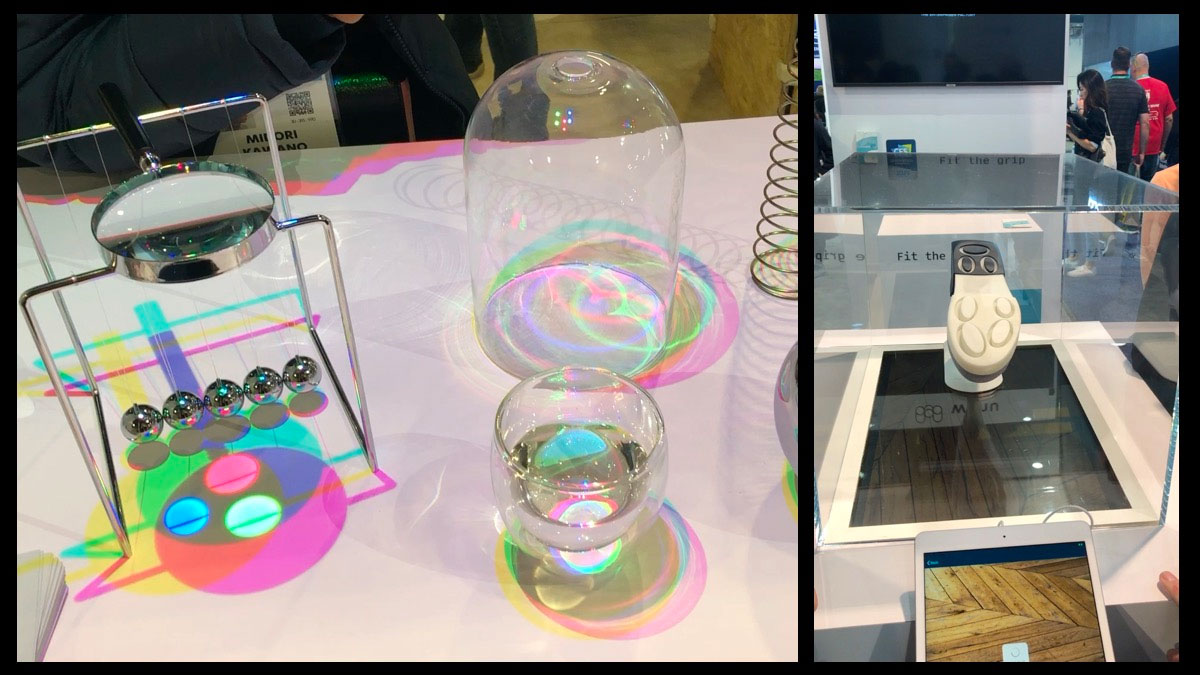
Startups are the Messengers
Large companies like Panasonic, Bic, Honda, P&G and many others showcased not only their own brand products, but also highlighted startups they’ve acquired or incubators they’ve sponsored that were contributing some of their most intriguing innovations that we saw. If you were looking for what was new and ground-breaking in these companies, oftentimes a good percentage of it was coming from the startups they were incubating.
Just to give you a quick taste of some startups we saw, RGB Light was one company with a cool product for interior home lighting. It produces white light, but more remarkably casts multi-colored shadows when it hits objects in the room. Not only that, but you can use the connected phone app to select from a number of different color palettes and decide what color shadows you’re in the mood for. Some options were more muted, while others would lend your living room an instant party vibe at the touch of a button!
Another startup, Wahu, showed their technology for shoe tread that reconfigures according to its surroundings in real-time. This means if you’re running on an icy path, you can tap a button on the app, and necessary areas of the tread will extend farther out from the sole at angles to provide extra traction. By contrast, if you’re on a polished hardwood floor, the tread can retract to be flatter and smoother.

Design Gaps in the Human Experience are Closing
As firm believers that good design is for all, we at SF can only marvel at how each year, more and more aspects of the human experience that were previously forgotten, taboo, or simply hard to solve are being touched by great design.
Phillips’ medical service app, uGrow, is made specifically to inform and equip women with essential information, care, and confidence during pregnancy and until their infant is 3 years old. All at the touch of a button, mothers can visit a doctor online, track their pregnancy and get estimates of the size, weight and current key developments of their child as it grows in utero. After the baby is born, mothers are furnished with daily articles and tips on how to care for their child and multiple ways to record and track anything from their child’s teething, to height and weight, and more. This was fascinating as it makes these services and knowledge for new mothers and their infants significantly more accessible, including for anyone who struggles with socio-economic barriers preventing them from getting in-person medical care and information.
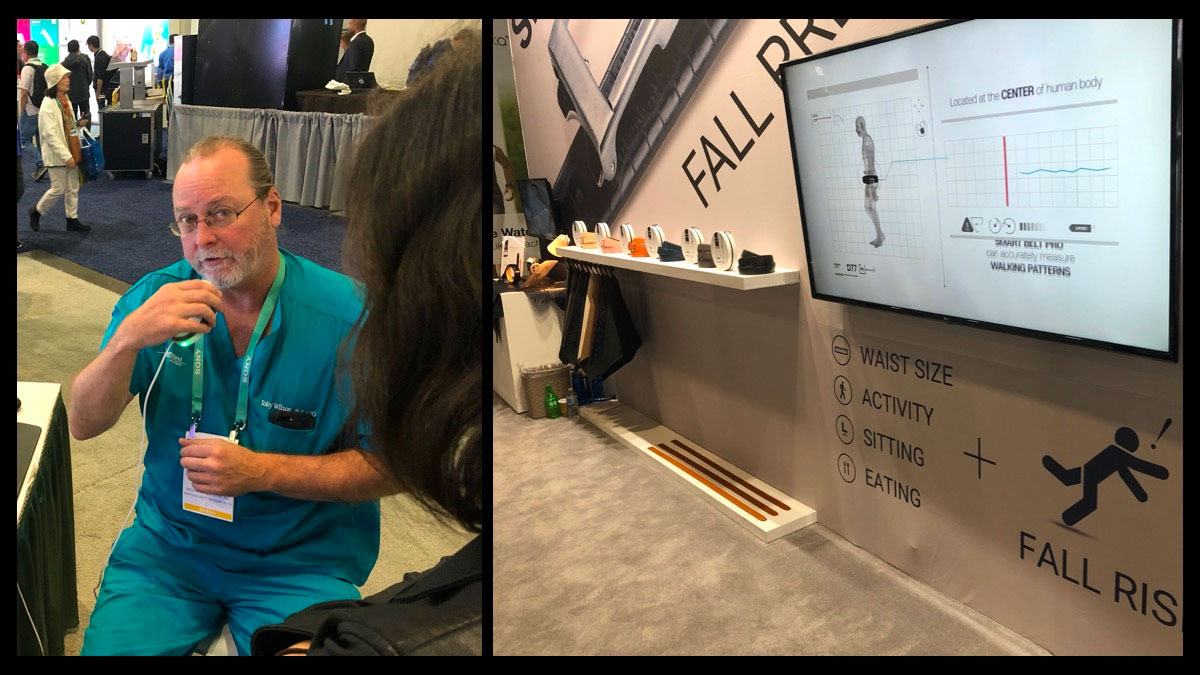
Other remarkable products abounded. Phillips had a fully portable sleeping mask with environment control for individuals with sleep apnea so that they can get healthy sleep at home, on a plane, in a dorm – anywhere. P&G showcased the “world’s first razor specifically designed to shave someone else”, developed by one of their acquired startups, for the family members and caretakers of adults with dementia, limited mobility, or other conditions. Another P&G subsidiary, “pepper&wits”, offers an entire line of personal care products specifically to alleviate the symptoms of menopause – a conversation that until now, we’ve certainly never seen addressed by this category. And now, even the stylish brown belt you wear to work everyday can not just detect a fall when it happens, but can prevent it altogether! Welt’s Smart Belt Pro tracks your physical activity like step count, sitting time, waist size, eating habits, and most importantly, it can detect irregularities in your walking patterns to notify you when you’re at risk of a fall.
Both Colgate-Palmolive and Oral-B presented connected toothbrushes that indicate in real-time if you’re applying the right amount of pressure while brushing. They also collect and track your brushing data so that you can see your improvement on the app, as well as how much time you’re devoting to brushing, and even if there’s a certain tooth you’ve been missing in your routine, so that you can pay more attention to that spot before your dentist has to inform you that you have a cavity!
Finally, you may have already experienced DrOnDemand or similar virtual doctor services that let you speak face-to-face with a doctor online, without physically visiting a clinic. If you have, you know that the extent to which doctors can administer care through this medium is limited by what they can determine apart from any physical examination. Well, startup company, MedWand, has a solution for this that they presented at CES in the form of an multi-functional, hand-held, diagnostic tool made for patients to use. This lets clinicians guide the patient through a remote physical examination using the MedWand device to collect multiple vital sign readings and relay them to the clinician in real-time. This new depth of care available just through telemedicine brings accessible healthcare to a whole new level!
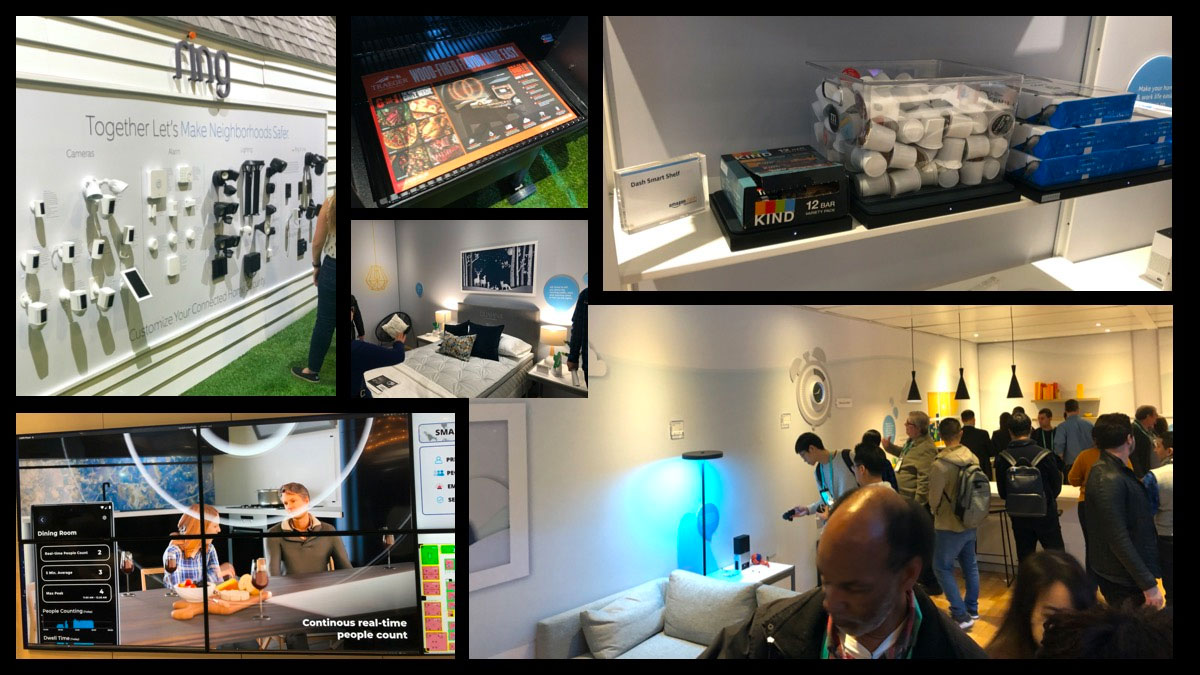
Connected Homes, Neighborhoods, Vehicles – Oh My!
Based on what we saw at CES 2020, it’s safe to say that pretty much all everyday products are now connected as the norm. In fact, it’s difficult to name a category or type of product at CES that didn’t have a representative connected version somewhere on the show floor. Amazon’s exhibit alone was enough to prove that. Their exhibit walked you through all the spaces of a typical home, each completely furnished with Amazon Alexa-compatible products – from connected shelves, to connected grills, to connected beds, to connected Lego robots, kitchen appliance, closets, mirrors… You name it – it’s connected!
However, with all the data collection and tracking that all these connected devices are constantly performing in the background, it also intensifies questions around the security of our personal information. Through the network of connected products and services we use every day – vehicles, neighborhoods, homes etc. – our precise whereabouts can be known at all times, and now, even right down to what room we’re in in our own home, what we’re doing and what we’re saying. At CES it was especially arresting to consider, out of all the devices and services meant to help us understand extremely private information like our personal health, vital signs, and even sexual wellness, how many are also connected and collecting and tracking our information. Thankfully, all of these products are created with the intention of improving quality of life for all of us, and so far, they do. However, we’ve seen private information leaked or abused at a mass scale in the past, and we still cringe to think of the potentially deep-cutting consequences of this technology for our society if security measures for all this information were to ever go awry.
If you were ever in doubt about the surety of an increasingly robot-enabled future, you only have to look as far as the shelves of your local toy stores to see the inevitable growth in robotics expertise and technology across our nation and the world.

AR/VR Ups their Game
Switching to a lighter note, the world of gaming is becoming more immersive and beguiling by marrying AR/VR capabilities and matching physical experiences that push the boundaries of realism, redefining “arcade” for our generation. Here are some examples that looked like the most fun to us!
Bot Boxer is basically what it sounds like. Up your boxing game by stepping into the virtual “ring” and throwing punches at your “opponent” – a character in your goggles, that’s seamlessly paired with a robotic punching bag. Icaros delivers a 4D flying experience! Lay out, superman-style, on their physical simulator that gives you the bodily feedback of changing directions as you control your own “flight” over beautiful landscapes in your VR goggles. Startup, VR LEO unveiled their family of VR arcade games that are sure to enhance any arcade floor, and compete in popularity with the most desirable games there.
Robotics = The New Lego
Another irresistible toy we saw explode at CES this year came in the form of modular, reconfigurable, and custom codable robotics kits designed for kids. These products were made for both education and fun by companies like DJI, Itty Bitty Buggy, and even the American Printing House for the Blind!
Beyond fun and games, however, the proliferation of products like these packaged as a consumer toy represent a significant shift towards widespread normalization of robotics literacy and expertise in the next generation – even more than we’ve already seen in the blossoming of academic and extracurricular kids robotics programs over the past decade. Young children are now learning nothing less than the fundamentals of robotics and coding, packaged as play, in their own home, from the ripe young age of as young as 6 or 7. Imagine the domino-effect that will accelerate robotics know-how across all ages with the adoption of robotics as common children’s toys! If you were ever in doubt about the surety of an increasingly robot-enabled future, you only have to look as far as the shelves of your local toy stores to see the inevitable growth in robotics expertise and technology across our nation and the world.
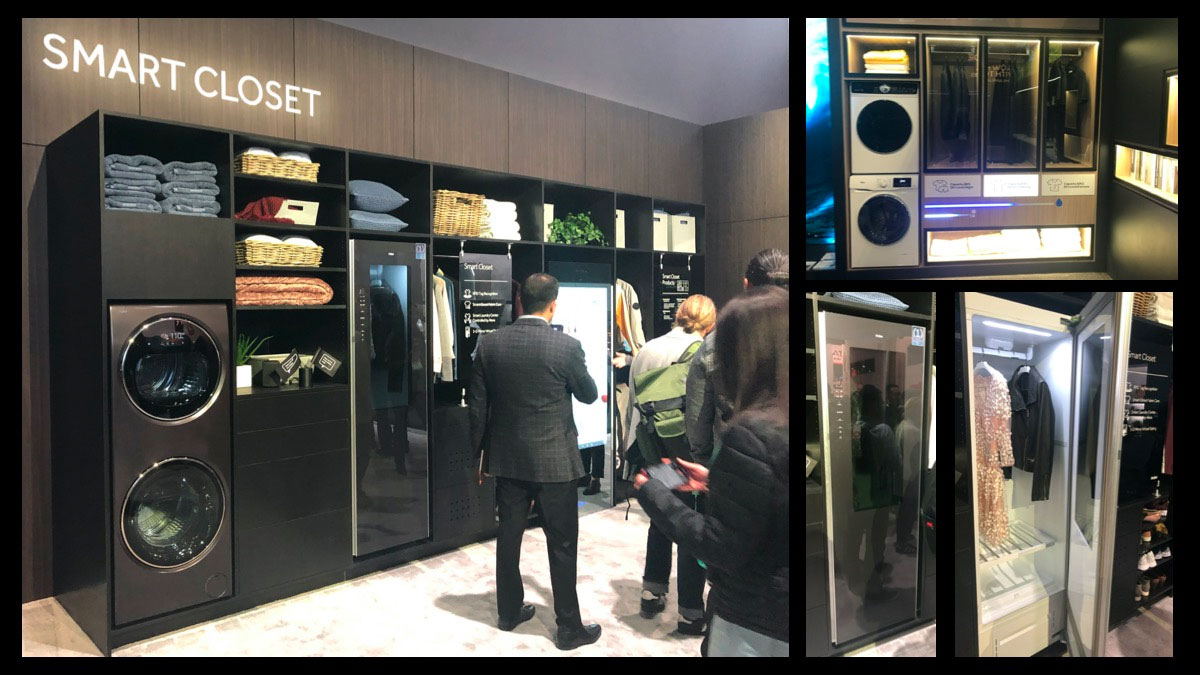
Smart Appliances
If the smart kitchen has been the frontier of innovation in home technology for the last few years, now the pioneers of home technology are racing into the next frontier: the smart closet.
Every major electronics company at CES, and even some minor ones had their own variation of the “smart closet”. From LG to Haier to TCL, we saw multiples of connected closet ensembles, all containing steam clothing care systems, washer/dryers, smart mirrors to help you pick your outfit for the day, and we even saw a waterless ultrasonic washing machine from TCL!

On the other hand, some companies took a more classic, analog approach to home appliances. For example, Samsung showed this stunningly simple modular fridge with no added frills, a latch-style handle mechanism that was beautifully satisfying to use, as well as color options to compliment whatever home decor you’ve got going on.
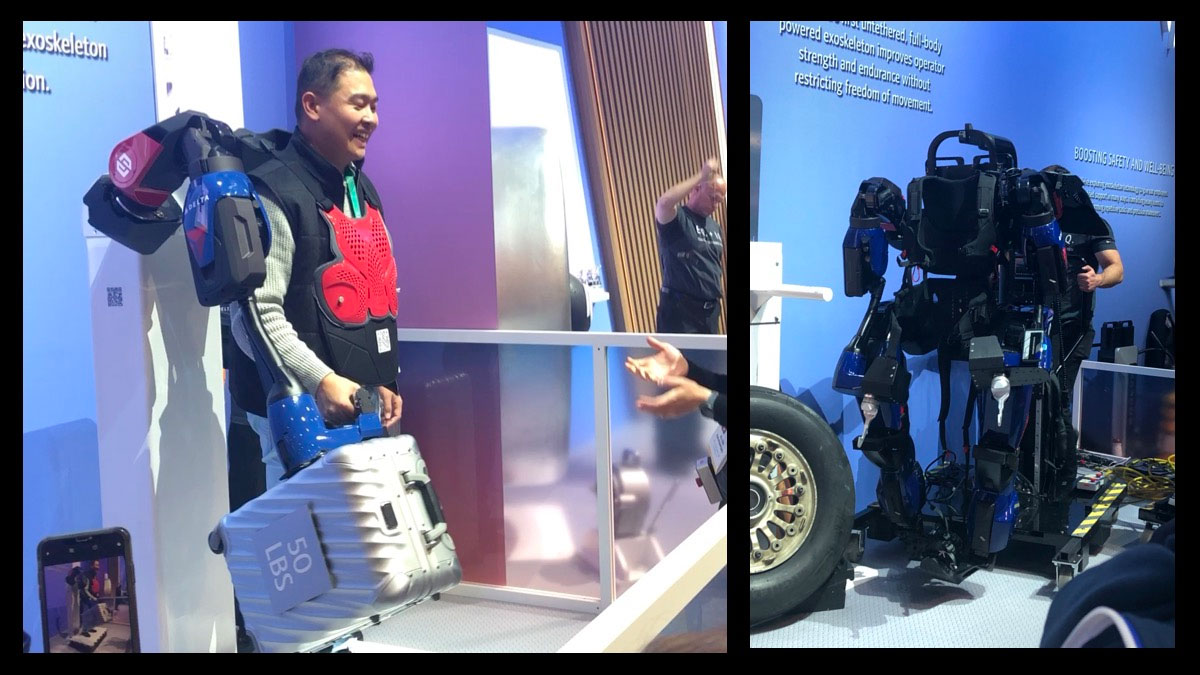
Skeletons! (Exoskeletons)
Companies like Delta, Honda and Samsung all showcased the exoskeleton technology they’re developing to assist their human workers in manual labor like loading and unloading luggage, assembly and repair of vehicles and machinery, or in Samsung’s case, to help consumers with rehabilitation and fitness.
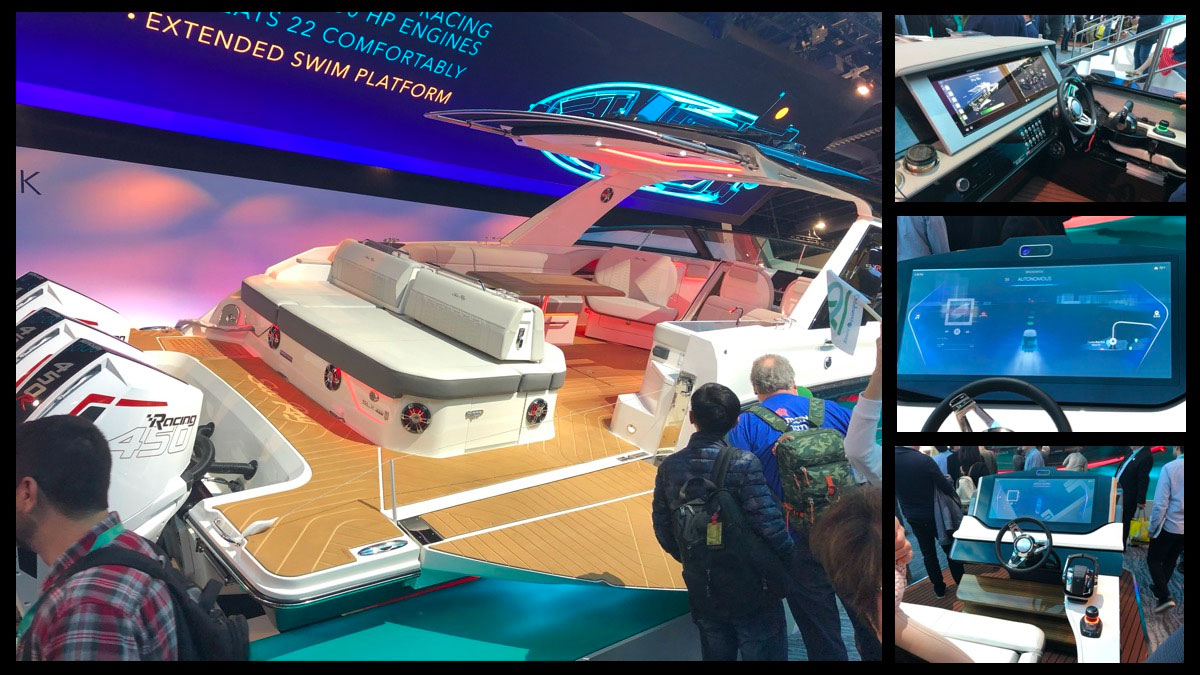
Recreational Boats Compete in the Mobility Category
This year, Brunswick Corporation was the solo representative in the recreational boating category, and they did not disappoint! The company’s CEO wisely stated “consumer expectations of boating are driven by other mobility experiences” (Brunswick.com). We couldn’t agree more.
At Sundberg-Ferar we’re working on multiple different projects simultaneously every day with clients across a wide range of categories, and we have seen time and time again that users’ expectations in one category are always affected in some way or even directly determined by another category. Not only that, but the best product in one category will often not only compete with other products in its own category, but also with those in a completely different category.
For example, the best new hockey helmet will most likely not only compete against other hockey helmets, but also against dishwashers or winter tires. Why? Because it’s all a question of what a user values more. If you design a hockey helmet that your user absolutely LOVES, even if it’s wicked expensive, your user will instead give up replacing their old dishwasher, or putting winter tires on their car if it means they can afford that beloved helmet. That’s the kind of product you want to design.
Again, users, or people don’t experience products by separate categories, the way we so when we work in the industry. People move seamlessly between categories. For example, you wake up in the morning and use your coffee maker to brew coffee, then you jump in your car to get to work, then afterwork you might jump in a golf cart to play a round of golf, or user your shears to prune your garden. You’ve just crossed between at least three different categories just by experiencing your daily routine. It’s this cross-referencing of human behavior and expectations across categories, and a constant awareness of trends across industries as a result of Sundberg-Ferar’s work with diverse companies that is one of our greatest strengths. It’s also what enables us to consistently present our clients with truly innovative product designs and prototypes that excel in the market.
All that to say, Brunswick’s CEO definitely knew what he was talking about, and this was made clear in the company’s relevant new technologies that had CES attendees drooling all over their dual 16-inch cockpit displays and luxurious boat upholstery. We wouldn’t be surprised to see consumers opting out of replacing their personal car for a couple years in favor of purchasing Brunswick’s Sea Ray SLX-R 400e. This boat was a beauty, with the power of three Mercury outboard racing motors and the first-ever eco-friendly “Fathom” e-Power System. It also boasted a helm with joystick piloting, autonomous driving and docking, Nautic-On remote boat monitoring and diagnostics, and Skyhook virtual anchor to lock for position using GPS. Their concept helm also featured gesture and voice control capabilities and the spacious displays we already mentioned. Last but not least, the Sea Ray SLX-R 400e also boasts red underwater lighting, the perfect finishing touch for this level of luxury.
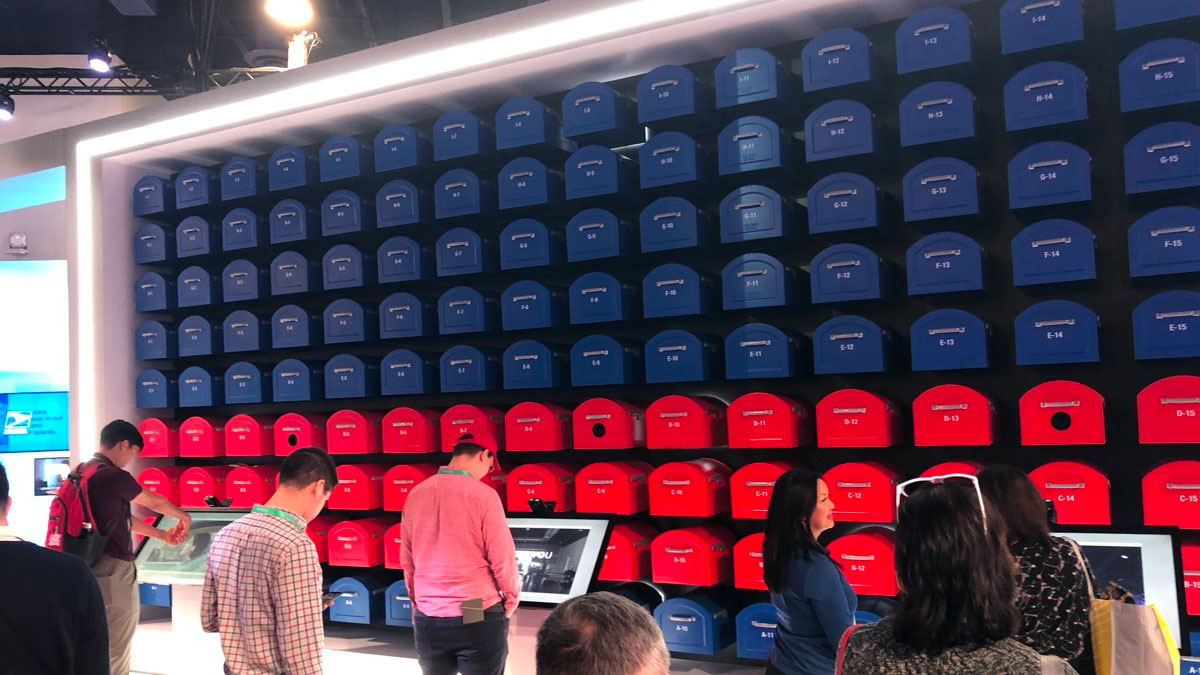
Snail Mail Turbocharged with Innovation
When you think of United States Postal Service, perhaps you don’t immediately associate it with disruptive innovations. However, our visit to their booth made us think again. USPS had a couple different initiatives helping to keep them in the package delivery game, despite “the man”, Amazon, threatening to take over completely. Out of these, the most interesting was “Informed Address”.
Have you ever had friends who you keep in contact with online, but over the years you’ve lost track of their actual address, and now you’d like to mail them something and can’t? Well, what USPS is proposing is that as long as you have your friend’s e-mail address, you can submit that to USPS and they will give you a code that you can then use to address your mail rather than using a traditional mailing address. This both saves you the hassle of tracking down the mailing addresses of your contacts, and as a recipient, it gives you a way to receive mail without having to disclose your real address. With this system, as long as you have someone’s email address – whether it’s your friend, a business contact you just made, or even a consumers of your product who you’ve never actually met but who’s signed up for your rewards program – you can address mail to them simply using their code generated by USPS.
This is certainly something to chew on, and while it opens up amazing possibilities, it’ll be fascinating to watch if and how this plays out in reality as we can imagine a couple of significant downsides to this system. For example, if a recipient doesn’t want to receive mail from a sender but does want to receive email from that person, what then? By linking these two channels, it cuts down on our overall flexibility in how we choose to receive communication.
On the other hand, it’s a really smart move for USPS if they chose to go through with it. A system like this would simultaneously make them a vault of sought-after information that anyone can unlock if they have the right email address, and it also makes them the sole broker of all that information. This could set USPS in the very strong position of an indispensable resource for future personal and commercial communications.

Smart Cities
One thing that struck us this year was how many automotive OEMs were not only creating new mobility concepts, but also the entire municipal architecture, and smart ecosystems that these concepts would live in. This year, Bell not only brought back their air taxi concept but also had a scale model of a city scape where their air taxis freely zoomed to and fro between landing pads installed on the tops of city buildings.
Toyota also displayed a scale model of their plans for the campus of the upcoming Tokyo Olympics and Paralympics where Toyota will be providing a massive fleet of vehicles to facilitate transportation provide inclusive mobility for all. This fleet will be 90% electrified, and built around Toyota’s plans for the campus architecture.
Hyundai presented a similarly wholistic mobility vision with their own air taxi in partnership with Uber Elevate. Their air taxi was arguably more believable than Bell’s, with a wingspan and number of propellers more proportionate to its load. Apart from that, Hyundai also introduced a vision for city-wide transportation that connects air and ground transportation via Hubs – transportation stations that act as landing pads for their air taxis with docks for their autonomous vehicle pods or PBVs (purpose-built vehicles). These PBV interiors would also be reconfigurable as a living space, restaurant, coffee shop, office etc., and transport humans between the Hubs.
One critique in all of this is that there seemed to be a serious lack of near-term concepts to fill the gaping hole that exists between our current aging infrastructure and that which we would need in order to make these future concepts remotely feasible. Each one is a great idea. However, the impetus is on us, industrial designers and innovation leaders in the industry, to make sure we design and create a viable path to get from here to there, and actually realize the ideal user experience.
Bringing it closer to home, though, Ford did explain that in Ann Arbor MI, just outside Sundberg-Ferar’s home in Metro Detroit, they are now tracking all mobility activity inside the city limits. That means as soon as you drive, walk, bus, or bicycle into Ann Arbor, your routes and transportation patterns are being tracked to generate data that will fuel research on smart city mobility and pave the way for safer, more efficient, and more accessible future mobility.

Transparent Displays
These were also prevalent across the automotive section of CES. The transparent display trend has grown over the last couple years, and now we’re starting to see displays that can effectively transition from almost-clear to opaque and in between. We say “almost clear” though because these displays are just that. We still haven’t quite reached the point of truly “transparent” displays…yet.
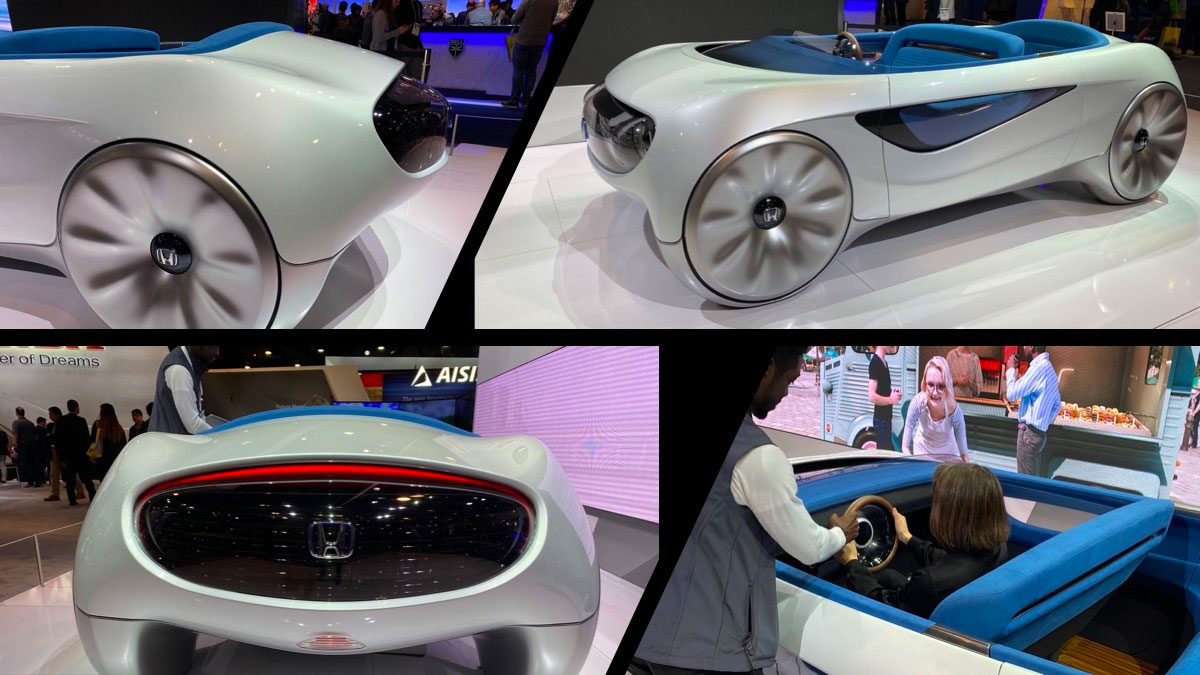
Next Steps toward Autonomy
Honda’s steering wheel demonstrator was one of the most developed concepts we saw at CES in terms of autonomous driving technology, and just as a great demonstrator overall. As the driver, this steering wheel would retract away from you in autonomous mode, or extend towards you in active driver mode. Put both hands on the wheel, and the steering wheel would give you a visual countdown before handing over driving control to you. You could accelerate and decelerate in active mode by pushing forward or pulling back on the steering-wheel, plus when in autonomous mode, you could still change lanes on the road simply by waving a hand left or right over the steering wheel. Talk about a sweet ride!
Meanwhile, BMW demonstrated a practical option for shared autonomous vehicles that actually seemed within the realm of possibility for today with their “Urban Suite”. Using a current production vehicle, they reconfigured the interior for a lounge experience with a comfy recliner, footstool, end table, and lamp. This pragmatic solution was refreshing as many autonomous ride-sharing concepts typically seem massively cost-prohibitive to ever launch at any kind of scale in the near future.

Automotive Lighting Tech
If there’s one booth that took the cake for automotive lighting it would have to be BMW. Their interior lighting demonstrator blew our minds with in-floor lighting that traveled through the cracks and crevices in the texture, back-lit seats that would send exploding light across the upholstery at your touch and other jaw-dropping features.
A close second was Mercedes-Bens’ front grill and headlamps concepts. Thick and deep enough to house at least 3 or 4 layers of LEDs, both grill and lamps had none of the traditional physical architecture or styling we’re used to. Instead layers of LEDs worked together to create moving 3D effects that could even mimic the form and brightness of a traditional headlamp, but with no real physical parts other than the lit up LEDs.
Inside Audi’s completely unique booth design that compelled you to walk through a forest of translucent hanging streamers to enter, they also displayed an impressive 3D OLED lighting technology that, when used in car lamps, can show multiple different signals simultaneously depending from which angle you look at it. This will come in very handy when level 3-5 autonomous vehicles are released and need an elegant way to signal intention to pedestrians, vehicles, and other parties all at the same time.

Robot-Assisted Daily Living
In addition to exoskeletons helping us in our daily work, robot assistants were generously peppered across the show floor. Agility Robotics had their robot, Digit, to assist with shipping and package delivery “from the warehouse shelf into your home”. Other assistants included voice controlled robotic arms that help you prepare meals in the kitchen, and can even look in the cupboard for a missing ingredient. Samsung’s cute and busy “Ballie” robot acts as your eyes when you’re not at home and can check on your pet for you, close the blinds at night, notify you if there’s any unusual activity, and more.
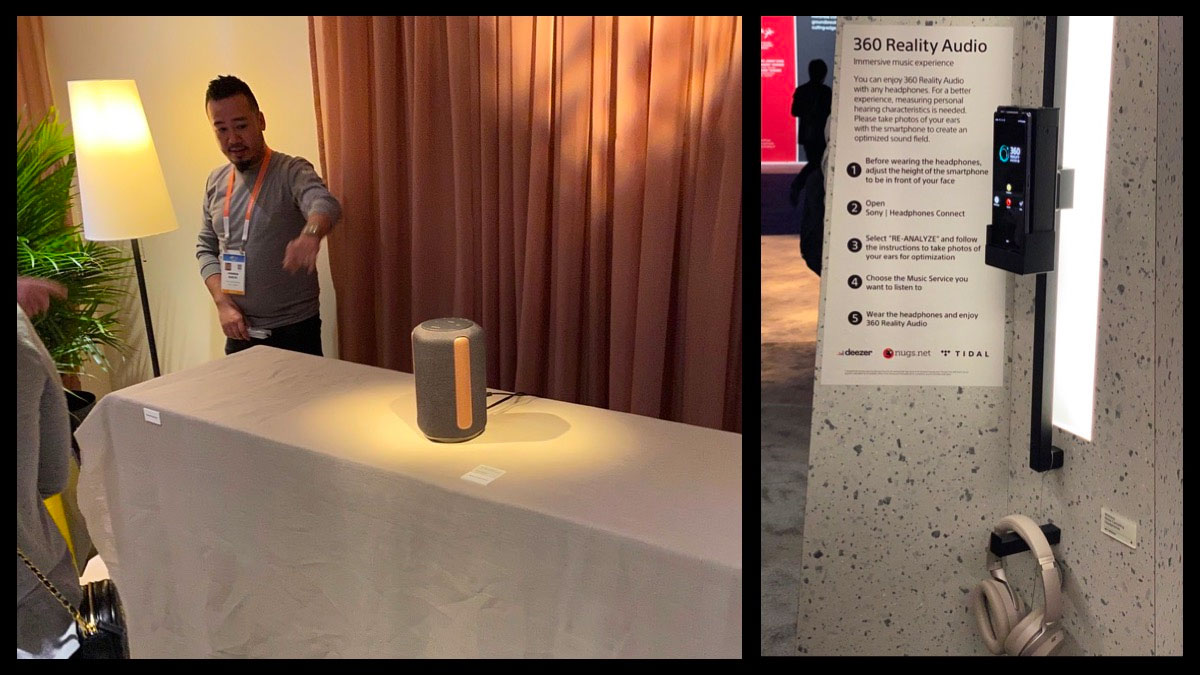
3D / 360 Audio
Sony wowed us with a couple technologies that had us scratching our heads wondering how on earth they pulled it off. Exhibit A: Their 3D Sound speaker. This single speaker, located in one spot in a room, could throw sound in a such that you felt like you were in the presence of a live band performing. This speaker could make a certain instruments sound like it was right next to you, and then depending on where you walked in the room that one would become fainter and a different instrument would get louder.
Exhibit B: Their 360 Reality Audio. The crux of this technology is Sony’s object-based spatial audio, meaning that individual instruments, and even live-audience noise are placed in a 360 field of sound. With specific Sony Headphones connected to the Sony App, you can take scans of your ear-shape, and after analyzing them, the ensemble will deliver a sound experience optimized for you. Experiencing this technology for yourself is unreal. When you’re listening, you can literally close your eyes, and if you don’t think too hard, you’d really believe that when you opened them, you’d be looking around at a live concert or studio recording session!

TV Tech
In TVs, the resolutions keep increasing – 8K is now the standard – screen sizes just keep getting larger and more versatile – whole walls larger than your living room are now becoming screens that can display in any aspect ratio – and display technology continues to deliver more physical flexibility to the degree that you can now use a display as fabric on a purse, or watch it move in a breeze like leaves on a tree! Apart from these trends, Samsung explained their game-changing new Quantum Processor that can take any film or image in any resolution and resize it to be a high-quality 8k image. TV’s that automatically rotate from traditional landscape orientation to portrait were another novelty. This particular function is meant to solve for the pain point of screen casting from a phone where many images and videos are in portrait format. The conversation also continues around how to make TV’s an efficient use of space even when they’re not being used. TVs that display artwork when turned off continue to be popular on the show floor and are indistinguishable in quality from other art pieces you might hang in your home. Other solutions we saw included, of course, LG’s rollable TV, but also one that was built to double as a bookshelf.

Data for the Future and Re-writing the past
In the frenzy of pounding the show floor, one of us did also get to sit in for some of the conference sessions. It’s from one of these that we came away with our chewiest food-for-thought from CES 2020.
Among other thoughts that Shelly Palmer brought us in his presentation on turning data into action, he explored the idea that as we collect more and more data, and AI becomes more powerful and accessible, more technologies like Deep-Fakes, for example, will become accessible to the average person. With these technologies, we not only unlock wonderful new possibilities for the future, we also unlock the danger of rewriting the past.
To illustrate his point, he put it to the audience, asking how many of those under 40 years old know of David Bowie. Of course, most of the audience did. He then asked if those same people knew every song David Bowie ever wrote. At this point, most had to admit that they didn’t. Then he showed a music video of Rick Astley’s “Never gonna give you up”, but instead of Rick singing the song and dancing the dance, it was David Bowie, in perfect form, dancing the exact same dance and singing the song. It was so accurate that if you didn’t know it was false, and that David Bowie never wrote, sang, or performed that song, you would naturally assume that it was real. This is the danger.
With this example, we see the scary potential that we now have at our fingertips in these technologies. Anything in history is no longer safe from being altered or falsified and passed off as the real thing. The only people who would know the truth are those that were really there, and if they’re not around anymore, who’s to say? Again, Palmer showed a complete video interview with Kim Kardashian, only to inform the audience that none of that was real. Kim never said any of those things, or gave that interview, and yet, we had just accepted it with no reason to suspect otherwise.
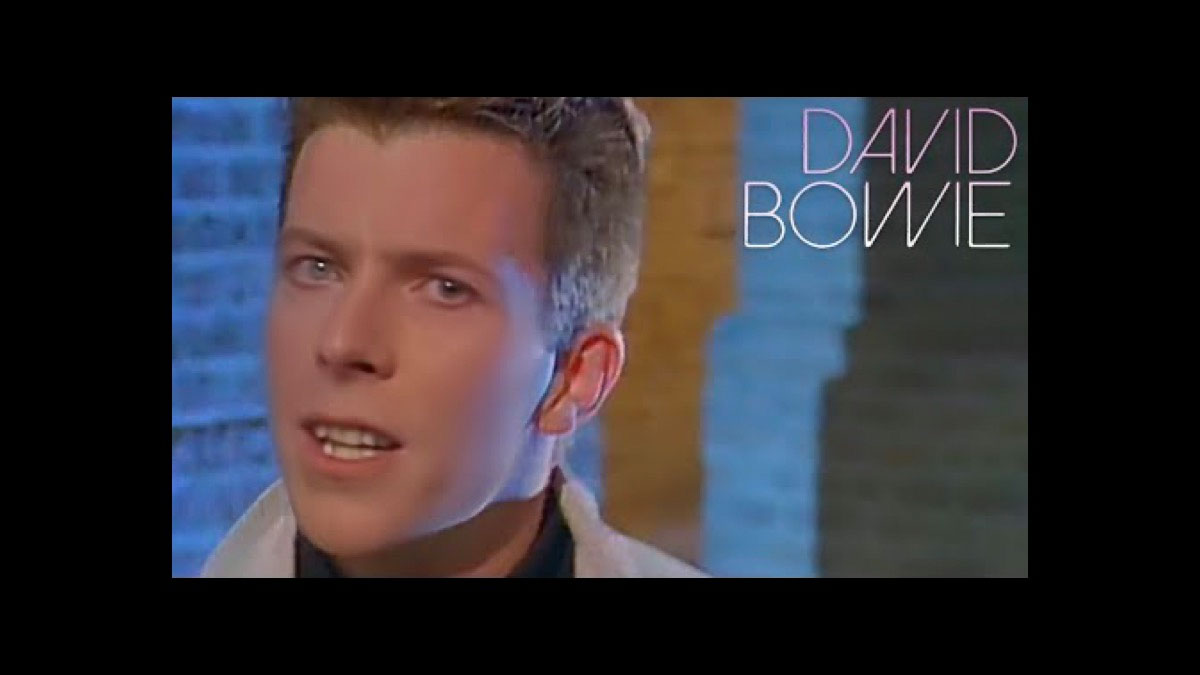
In considering what this means for our collective future, and also our past, it underscores the urgent need for us to always consider how the products and technologies we create are not only going to be use, but also misused. At Sundberg-Ferar, we highlight this with our clients time and time again. Their products will be misused by their consumers. It’s just a question of how. Oftentimes misuses of their product actually lead to helpful insights that enable them to maximize the product’s function and make it more useful, usable, ergonomic and beautiful – which is a wonderful outcome! All of us also have to keep in mind though that sometimes, products are abused. It’s incumbent on us as industrial designers to understand the human behavior that will influence how a product will be used in context, and anticipate the outcomes using tools like design research and observational studies. Read more on SF’s methodology to understand a product’s users here. In this way, we provide our clients with the maximum amount of confidence that they’re going to market with a product that will be used and perceived the way in which they intended. The purpose of this is not merely to keep products from being abused, but ultimately to go beyond; to make every product better and more beautiful; to make it more useful, usable, and ergonomic; to fulfill the ideal, aspirational user experience, and finally to benefit humanity as a whole.
Bringing it Home
The two of us from Sundberg-Ferar returned home having broken in multiple pairs of sneakers, and with our minds exploding with all the great design we saw. With this first-hand knowledge of the ground-breaking new technologies of 2020, we’re excited to start applying them in our designs and ideas, knowing that, where before they might have been merely a future possibility, now they’re ready and available! This same exposure broadens the cross-pollination of ideas we bring to our daily work beyond what we’re already privy to as we design across categories, and whereby we can provide our clients with an even more faceted understanding of their products and the possibilities for future innovation within their entire ecosystem. We already can’t wait to see what’s in store next year at CES – this show that’s unlike any other in showcasing the full spectrum of design and innovation!
Author

Lynnaea Haggard
Industrial Designer, Marketing and Communications
Lynnaea Haggard, Industrial Designer + Marcom, has a natural passion for storytelling and building relationships. She started her college education in Journalism, but soon found her passion in switching to Industrial Design. Now she uses her industrial design and skills and enthusiasm for communication to support studio projects as well as design and develop Sundberg-Ferar’s marketing and communications materials. In her spare time, she does anything outdoors, reads, writes, and keeps her cello performance skills sharp.


